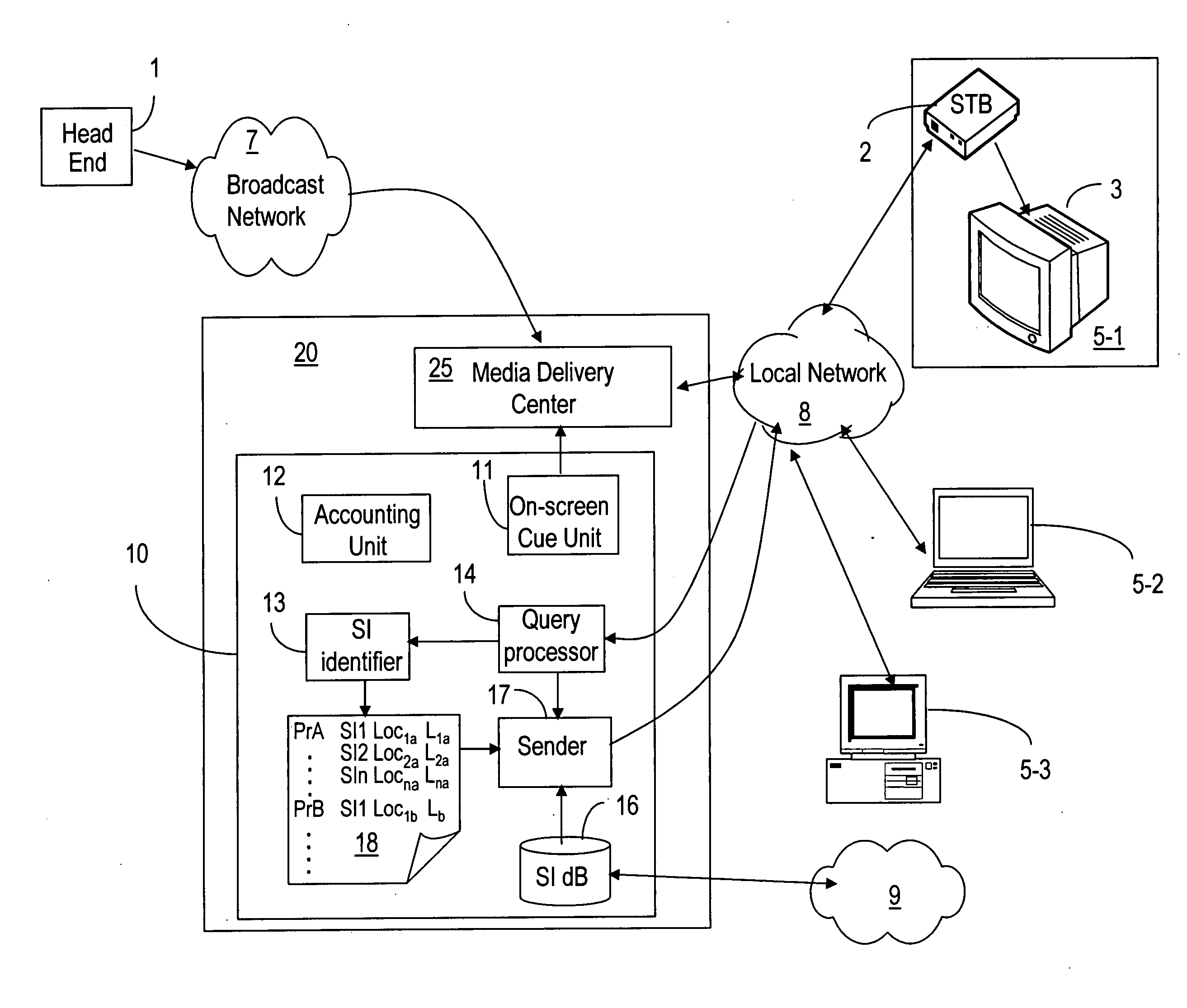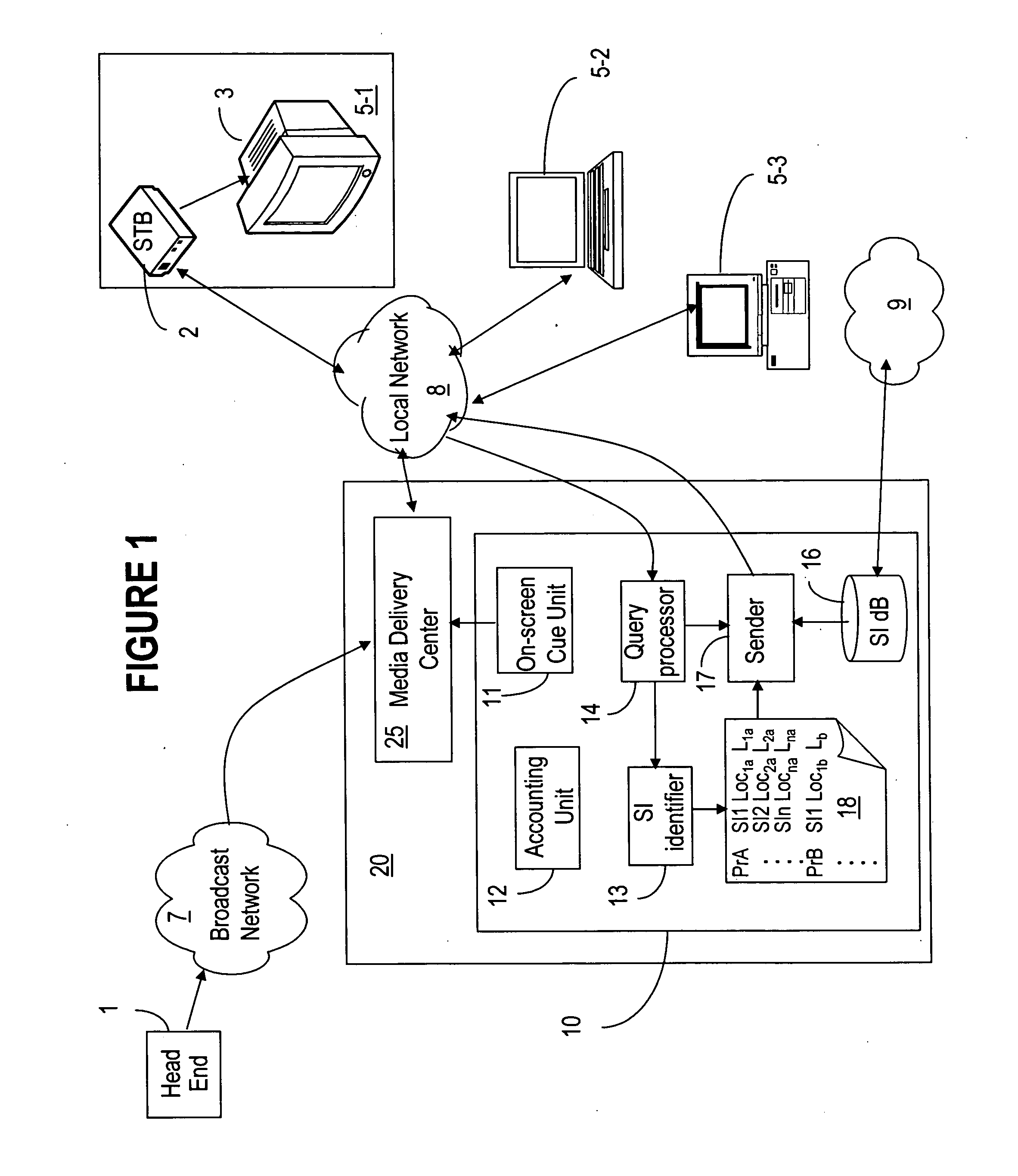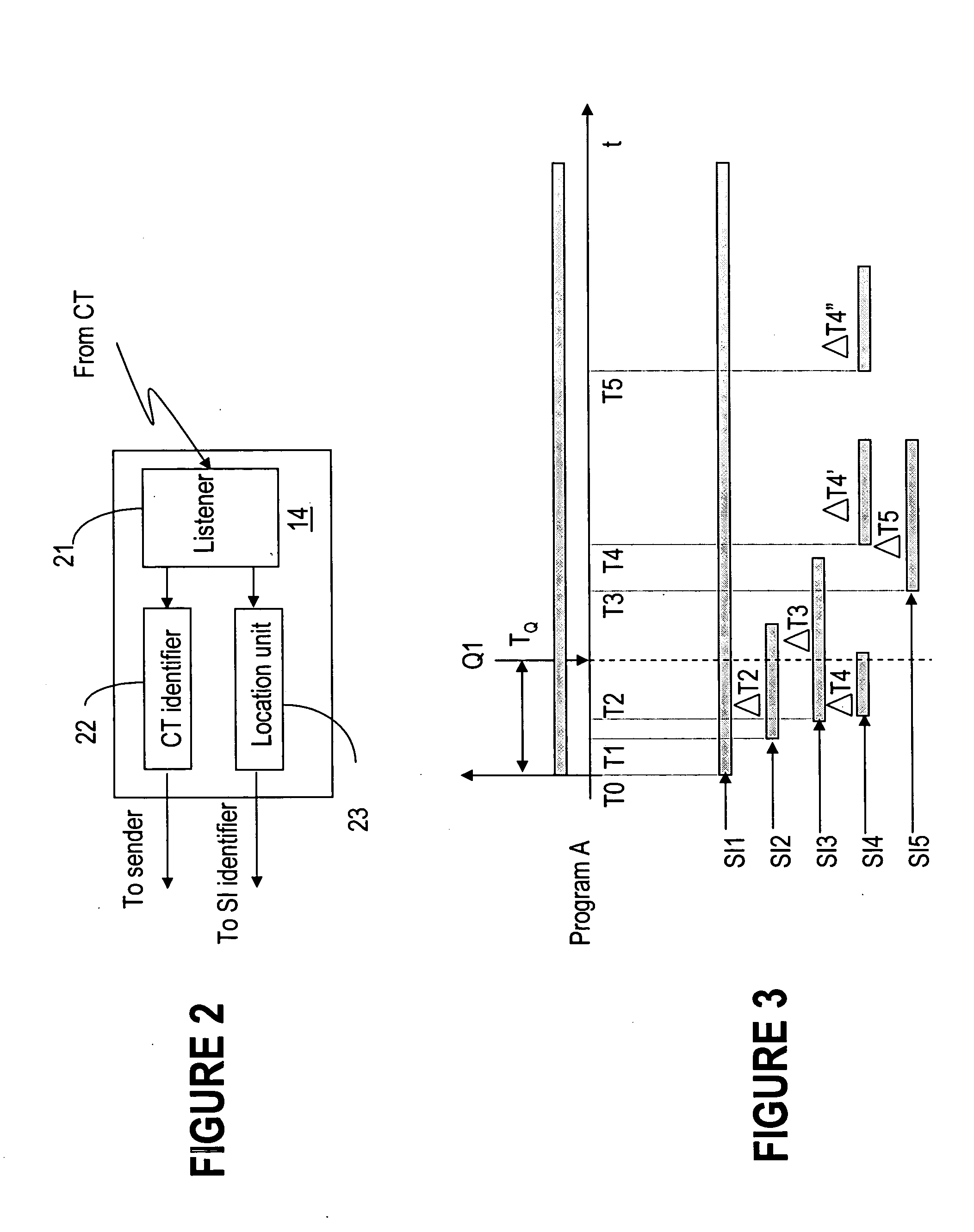As a result, it became more difficult for the TV services providers and advertisers to increase the number of consumers their ads reach; also, it became increasingly difficult to guarantee that consumers will watch, hear, read, or otherwise absorb or become exposed to the ads within the entertainment content.
This trend has led to lower advertising fees and lower profits.
In addition, the traditional
video advertising model does not provide the consumers with enough information about the products of interest.
Just seeing a short clip with a product / service in the middle of a TV program does not necessarily provide enough information to generate a sale by themselves.
A fraction of the audience who could be potential customers may not know how to perform a successful Internet search, and a further fraction may not be motivated enough to perform such a search or use other mechanism to
gain more information.
Furthermore, if an Internet search is performed, it may return results for competitor's products.
Still further, television advertising does not present the information in a helpful, practical or personalized way, in other words it is not inherently selective.
Although an advertisement can be placed in a program which has been made for an audience with somewhat specific market characteristics, it is in generally difficult to target traditional television advertising.
Therefore, the advertisement viewed by the other 60-80% of the audience, which are not prime candidates, represents a large amount of wasted spending by the advertiser.
However, audience characterization provides only estimates of which ads certain groups of consumers will accept; greater accuracy would likely require the cooperation of the viewer.
But, most viewers are not eager to volunteer more personal information and are suspicious when information on their behavior is collected without their
active participation.
As a result accuracy is likely to remain limited and consumers of a targeted group may ignore or avoid the ads targeted for them, and not receive ads that might interest them.
However, conventional systems for organizing video content on these channels are not well tailored to emulating the shopping experience; while
purchasing goods through a conventional communication network offers the luxury of shopping from home, the benefits of traditional shopping malls continues to draw shoppers.
Also, this method requires the advertisers to balance between the product being noticeable and being obviously pushed.
That is, while some viewers may not notice the product allegedly being advertised, others could be annoyed by the placement.
This approach is limited to products that already enjoy customer recognition, or else requires explicit mention, which may be suitable for certain programming types but otherwise tends to appear artificial.
As well, without explicitly being part of the program, the amount of information available on a product is extremely limited.
This type of advertising tends to have similar limitations as described above, in terms of not being able to be customized, requiring viewer recognition and being limited in the amount of information that can be conveyed.
The ability to superimpose images of advertisements onto otherwise live feeds has emerged allowing customization, though the other limitations remain.
Closed-captioning (CC) and alternate audio tracks are not particularly suited to advertising.
The amount of information provided in this
scenario is limited to text or audio information, and is also limited by the amount of time available, i.e. during a half hour program each CC or alternate audio channel can only provide half an hour worth of product information.
Furthermore, there is a practical limit on the number of CC and alternate audio channels available (at least for broadcast video programs).
As a general note, independent of technology to bypass advertisements, people tend to develop resistance to advertising that is not relevant to them, which results in their “tuning out” advertising of any format.
Novel formats of advertising may grab their attention for a period of time, however, consumers eventually become jaded and the effectiveness fades.
This greatly limits the flexibility.
The production of
interactive programming is appreciably more complex than conventional production—and can not be separated.
However it is difficult or impossible to provide all information on a product that any potential customer may be interested in within a reasonable size of ad.
The longer the ad, the greater the cost to the advertiser, the fewer number of ads that can be sold and the greater likelihood that some viewers will be annoyed.
The current methods and systems of pushing advertising at consumers are susceptible to viewer fatigue or outright counter-measures.
Specifically pulling advertising is a cooperative exercise; however advertising intended to be pulled by the consumers is currently complex and expensive to produce at this time.
 Login to View More
Login to View More  Login to View More
Login to View More 


